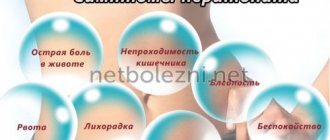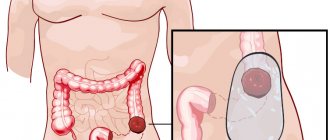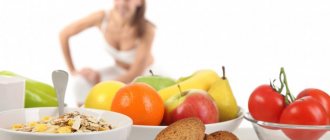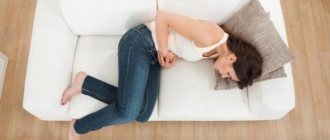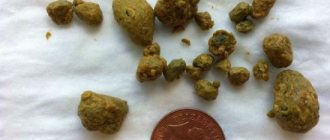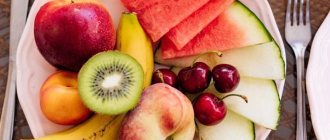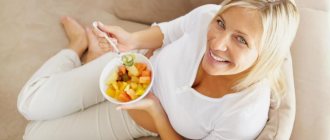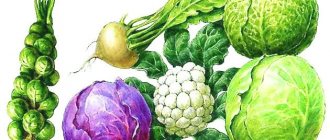What diet does intestinal diverticulosis require?
Diverticulosis is a disease in which multiple protrusions appear in the wall of the colon. This is not due to congenital causes, but to long-term malnutrition of an adult, which creates high intraintestinal pressure.
A diverticulum is a protrusion of the intestinal wall that appears from poor nutrition
It is no longer possible to correct the situation - the diverticula will not “retract” back. But preventing possible complications and preventing the formation of new hernia-like areas is an entirely achievable goal. And only a diet for intestinal diverticulosis can accomplish this.
Where does everyone start?
A gastroenterologist should select nutrition, taking into account the condition of the intestines:
- decreased or increased tone of the intestinal wall,
- the basis for the development of diverticula was thinning of the intestinal wall or disease of the entire connective tissue,
- are there any inflammatory complications (diverticulitis),
- what microflora predominates inside the intestinal cavity.
Warning! To do this, you need to undergo some preliminary studies: colonoscopy (endoscopic, virtual or capsule), X-ray contrast study, general and biochemical blood tests.
Based on the data obtained, the following options can be selected:
- if reduced intestinal tone predominates and its wall is thinned, the diet should contain a lot of plant fiber and at least 1.5 liters of liquid;
- if the coordination of the work of different parts of the intestine is impaired, which is most often a consequence of dysbiosis, the diet should include more fermented milk products, as well as ballast substances. At the same time, you should try to eat food at the same time;
- if diverticulosis is complicated by inflammation of the mucous membrane of intestinal protrusions, a diet with a minimum amount of waste and fiber is necessary.
Therapeutic diet for intestinal inflammation
Principles of nutrition
To prevent the progression of the disease and the development of complications, the diet for diverticulosis must meet the following requirements:
- take food often, in small quantities;
- products that are ground or otherwise crushed should predominate: so that each piece is better coated with enzymes and digested without increasing intestinal pressure;
- puree soups and milk porridges are the basis of the diet;
- there should be a lot of bran, vegetables, berries, fruits or dishes made from them - they contain plant fiber;
- You need to drink enough liquid between meals. And this is not only water, but also juices, jelly, and rosehip decoction;
- for constipation, preference should be given not to laxatives, but to herbal teas, prunes and plum juice;
- It is necessary to avoid alcohol, caffeine-containing products and the use of seeds.
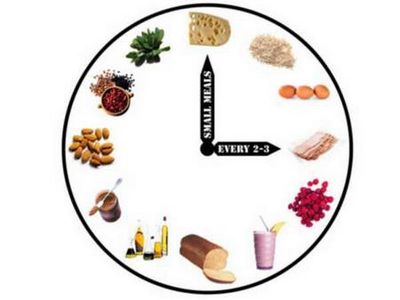
If you have diverticulosis, it is very important to eat at the same time every day.
Since the basis of nutrition for diverticulosis is the consumption of dietary fiber (fiber), but it is difficult to immediately change your eating habits, we offer the following rules for switching to high-fiber foods:
- Replace white bread with bran bread;
- If you want to eat sweets, take berries, bananas, peaches;
- Replace apple juice with raw, peeled apple;
- Avoid peeling apples and pears before baking;
- You can add raw bran to your food, which is sold in stores and pharmacies;
- Eat more vegetables, fruits;
- It is advisable to prepare soups vegetarian, adding barley to them;
- Replace some of the beef in dishes (especially casseroles) with beans;
- For dessert, eat not sweets and cakes, but dried apricots, raisins, and nuts in small quantities.
Advice! You don't need to follow all of these recommendations at once - make it a rule to introduce one of them every 6 weeks. Don't be alarmed if your bloating gets worse in the first few weeks. This is a normal reaction of the intestines to changes in diet.
Prohibited and permitted products
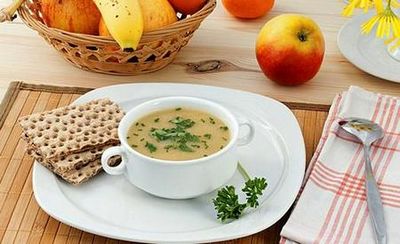
Food for diverticulosis should contain a lot of fiber and be ground
To further explain what nutrition should be like for intestinal diverticulosis, we provide a list of permitted and undesirable foods for consumption.
The importance of nutrition in the treatment of disease
If the disease is asymptomatic, specific treatment is not required. When clinical signs develop, medications (antibiotics, probiotics, etc.) and diet therapy are prescribed. In severe cases, surgical treatment is required to remove diverticula or part of the intestine.
Therapeutic nutrition for diverticulosis of the sigmoid colon involves a strict diet and consumption of large amounts of coarse fiber. It improves perilstatics, eliminates flatulence, constipation, nausea, diarrhea and other symptoms.
The role of diet in intestinal diverticulosis #8212; prevention and treatment
Diet for intestinal diverticulosis can prevent the development of complications.
With diverticulosis, cavities form in the walls of the small and large intestines in which feces accumulate. This leads to inflammation, and subsequently to suppuration of the intestine.
Proper nutrition prevents diverticula from becoming clogged with intestinal contents.
The role of nutrition in the prevention of diverticulosis
Diverticula appear as a result of stretching of individual sections of the intestinal wall. Normally, the intestinal wall is elastic and is capable of restoring its diameter after stretching.
However, a sedentary lifestyle and a diet poor in plant fibers lead to the fact that stool does not move quickly enough through the colon.
Because of this, the intestinal walls stretch and lose tone. Over time, cavities form in them, which further impede colon cleansing.
An unpleasant feature of diverticulosis is the absence of severe symptoms at an early stage. Proper nutrition stops the formation of diverticula when they first begin to form.
At the beginning of the development of diverticulum, symptoms of the disease are completely absent. There is no discomfort in the intestines, the stool is normal, the stomach does not hurt.
The person continues to lead his previous lifestyle and does not take any measures, since he is not bothered by any unpleasant symptoms.
After a few years, when cavities in the intestinal walls begin to prevent the normal passage of feces from the intestine, the first symptoms of diverticulosis appear - periodic bowel movements in small solid fragments.

Such feces appear when the cavities are not yet too deep and are able to cleanse themselves.
If at this time you do not examine the intestines with a proctologist and do not start treatment, the diverticula will deepen, and then their independent cleansing will become impossible.
From this moment there is a possibility of the onset of the acute stage of diverticulosis - diverticulitis.
- nagging pain in the intestines to the left of the navel;
- increased temperature, fever, tachycardia;
- diarrhea.
Additional symptoms of diverticulitis are detected during testing. A general blood test will show the presence of an acute inflammatory process in the body. In this case, surgery may be required to remove part of the intestine.
Serious consequences can be avoided if you start eating right and making sure that your intestines are emptied daily. People with chronic constipation are at risk for diverticulosis.
You don't have to wait until symptoms of diverticulosis have already appeared to start eating healthy.
What you need to know about diverticulosis?
As already mentioned at the beginning of the article, intestinal diverticulosis is characterized by the presence of small pouches, hernias or bulges in its walls, usually located in the area of the colon. This is a fairly common ailment that does not make itself felt by any symptoms, except that in these very sacs or diverticula, digestive “waste”, waste and toxins accumulate over time, which naturally leads to an increase in the number of bacteria.
At this point, a person usually begins to feel pain in the lower left abdomen. This is the first warning sign. It is also necessary to pay attention to the presence of the following possible disorders: frequent diarrhea, followed by constipation (irregular bowel movements), elevated body temperature, nausea, vomiting, etc.
Another unpleasant point: if diverticulosis occurs once, the probability of relapse is as much as 45%. Therefore, doctors insist that in this condition you should no longer eat certain foods, or at least avoid their excessive consumption, so as not to harm yourself even more.
Diet for intestinal diverticulosis: to eat or not to eat?
What is diverticulosis
A disease in which thinning of the mucous membrane occurs and the formation of a protrusion in the form of a bag is called diverticulosis. This condition can affect any part of the digestive tract, but is most often detected in the intestines. Diverticulosis can be single or multiple.
It is worth noting that diverticulosis can be congenital and acquired. In the first case, it is formed during the period of intrauterine development, while the second type occurs under the influence of certain negative environmental factors, therefore, if preventive measures are taken, it can be prevented.
If a patient is diagnosed with this disease, it is worth starting its treatment immediately. In the absence of proper therapy, pathology can lead to the following negative conditions:
- inflammation of the protrusion - diverticulitis;
- intestinal obstruction;
- internal bleeding;
- development of the oncological process;
- fistula formation;
- peritonitis - inflammation of the abdominal cavity;
- diverticulum perforation;
- dysbacteriosis;
- death.
To avoid the above consequences, it is important not to let the disease progress, especially since it responds well to treatment.
What is diverticulosis (video)
Treatment
With timely detection of intestinal diverticulosis, complete recovery is possible. To eliminate the disease, the patient is prescribed a combination treatment, which may include:
- Drug therapy (enzyme preparations, antispasmodics, drugs that restore normal microflora, antibacterial agents).
- Surgical intervention. This method is used when frequent exacerbations occur or in cases where any complication of diverticulosis develops.
- Diet.
Proper nutrition can soften the course of the disease and significantly speed up the recovery process, so it’s worth starting to get rid of pathology with diet correction.
Features of the diet for intestinal diverticulosis
To achieve the desired effect, you must adhere to the following recommendations:
- eat food in small portions, but often, at least 5 times a day;
- give preference to mechanically and thermally processed products;
- include foods rich in coarse fiber in your diet;
- drink plenty of water. The optimal daily volume is 1.5–2 liters.
Allowed food products
With diverticulosis, patients should follow a diet that includes:
- dairy products;
- cereal porridges cooked in water or milk;
- vegetable soups, purees;
- fruits, berries: bananas, apples, cherries, citrus fruits, melon, peaches;
- bran bread;
- prunes;
- freshly prepared juices, including plum juice;
- herbal teas.
You can also use bee bark. This product helps strengthen the immune system, has an antiseptic effect, and improves food digestion.
What can you eat (gallery)
The following foods are allowed to be consumed in limited quantities:
- seeds;
- nuts;
- dried fruits;
- foods that increase gas formation in the intestines: legumes, white cabbage, grapes, watermelon;
- radish;
- a pineapple;
- lean fish, meat;
- eggs;
- radish.
Foods that can be consumed in small quantities (gallery)
Prohibited foods
The following foods should be completely eliminated from the diet:
- mushrooms;
- spicy, fatty, fried foods;
- canned food;
- marinades;
- cocoa, coffee;
- alcohol;
- whole milk;
- strong tea;
- some berries: wild strawberries, strawberries, raspberries;
- pasta;
- chocolate;
- smoked meats;
- confectionery.
Many people are interested in: is it possible to eat pizza if you have intestinal diverticula? You will have to refuse such a dish, since the rich dough, the presence of smoked meats and sauces will have a negative effect on the digestive canal.
Diet menu for colon deformation
The diet menu for colon deformation is ideal for stabilizing stool:
- 1st meal: before eating the main breakfast, consume one teaspoon of bran soaked in water. After some time, you can eat steamed omelet, cottage cheese and herbal tea.
- 2nd: baked apple.
- 3rd: light soup and vegetable salad.
- 4th: natural yogurt.
- 5th: boiled chicken breast with potatoes.
Steamed omelette: milk – 60 g, egg – 2 pcs., vegetable oil. Mix eggs and milk, pour into a steamer, greased with oil, cook.
The pain associated with diverticulitis is often acute. Taking painkillers is sometimes contraindicated at the stage of diagnosing the disease. Eating the right foods will help reduce pain symptoms.
The importance of following a diet for intestinal diverticulosis
With diverticulosis of the colon, diet has a beneficial effect on the functional state of the digestive system. Increasing the amount of plant fiber in the diet normalizes the process of stool formation. This promotes better passage of feces through the lower intestines and less mechanical irritation of the diverticula.
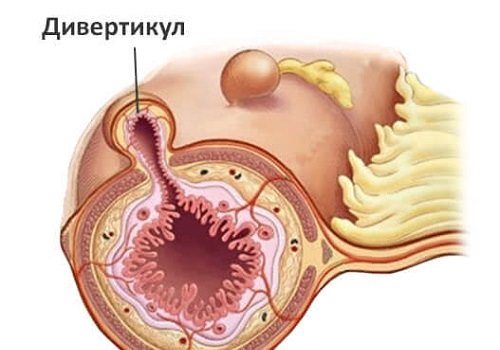
Compliance with dietary recommendations, which include treatment table 5 according to Pevzner, is necessary as a method of successful pathogenetic treatment. Diet helps prevent exacerbation of pathology over a long period of time.
What can you eat
The list of foods that you can eat is conditional. For a therapeutic diet, you need to create a menu for yourself. The food list serves as a guideline from which to build.
| In remission | During exacerbation | |
| Porridge | Buckwheat, oatmeal, water or milk. | Processed grain porridge, pasta, rice porridge, well cooked. |
| Soups | Vegetable puree soups, cereal soups. | Broths. |
| Meat | Lean meat, poultry, fish. | Boiled fish and chicken can be used in small quantities. |
| Eggs | Steamed omelette, soft-boiled eggs. | Steamed omelette. |
| Dairy | Fresh cream, kefir, cottage cheese, soft and mild cheese. | Fresh cream, kefir. |
| Vegetables | Any kind that does not cause aggravation, boiled and pureed, in small portions. | In small quantities, thoroughly boiled and pureed. |
| Fruits and berries | Berries without grains, fruits without rough peels, in the form of jelly, casseroles, in small quantities - fresh. | In small quantities bananas, peaches, melon, cocktails from the pulp of fruits and vegetables. |
| Beverages | Not hot chamomile or mint tea, rosehip infusion, weak tea. | Rosehip decoction, herbal decoctions. |
| Oil | Any vegetable in the finished dish, creamy in small quantities. | Any in the finished dish. |
You should choose products for your daily menu, taking into account the functioning of your intestines. With diverticulosis of the colon, unstable stool occurs: alternating constipation and diarrhea. It is important to normalize stool by refusing to eat foods that have a laxative effect for diarrhea and a binder for constipation.
Diet rules for acute form and exacerbation of the disease
The main goal of the diet during a relapse (exacerbation) of the pathological process is to minimize the functional load on the organs of the digestive system. There are several simple rules that must be followed:
- the diet includes only permitted foods;
- prohibited and conditionally limited dishes are completely excluded;
- food is well chopped;
- the average temperature of the food is ensured;
- eating at least 5 times a day in small portions;
- dinner is allowed no later than 3 hours before expected bedtime;
- During the day, drink a sufficient volume of liquid of at least 1.5 liters.
Products excluded from the diet
During the period of relapse of intestinal diverticulosis, the functional state of the digestive system organs deteriorates, and symptoms of digestive disorders appear. Often an inflammatory reaction develops in the protrusion tissues. During an exacerbation, it is important to completely exclude the following foods from the diet:
- any canned fish, vegetables or meat;
- beans, peas, soybeans, beans;
- all mushrooms;
- alcohol in any form;
- fatty meat (pork, duck) and fish (mackerel);
- pickled, pickled vegetables;
- any pastries;
- confectionery, chocolate;
- sausage, including boiled and smoked;
- pasta;
- cabbage in any form;
- products with allergenic properties (eggs, cocoa, nuts, peanuts);
- seeds;
- kvass, sparkling water, sour fruit juices, coffee.
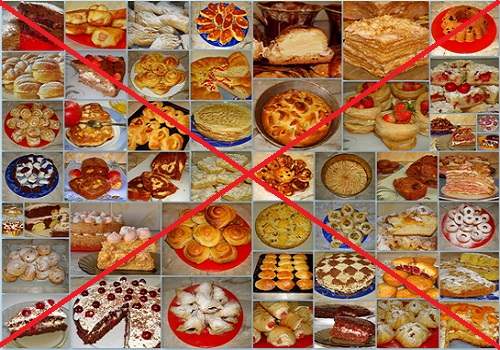
Dishes and products that are consumed during an exacerbation
List of products that are allowed during relapse of intestinal diverticulosis:
- buckwheat, oatmeal, which are prepared in water or low-fat milk;
- chopped vegetables that do not contain coarse fiber (potatoes, pumpkin, carrots, zucchini);
- dietary meat (rabbit, chicken excluded) and fish (bones in fish should be carefully selected);
- vegetable fats (sunflower, olive oil), which are added in small quantities to dishes;
- low-fat processed milk products, including yogurt, cottage cheese, kefir;
- fruits that are consumed after heat treatment (jelly, baked apples);
- compote of dried fruits, decoction made from bran, weak black tea, to which you can add low-fat milk.
Important! Allowed dishes during exacerbation of intestinal diverticulosis allow you to prepare a variety of tasty dishes without compromising taste. At the same time, the load on the intestines is significantly reduced, and conditions are created to reduce the severity of the inflammatory reaction, regardless of the type of changes.
Diet menu for pain from diverticulosis
Diet menu for pain from diverticulosis in the morning - herbal tea and a light salad of soft fruits; You can have a snack with cottage cheese with low-fat sour cream or kefir; for lunch - soup with rice; in the evening boiled fish and potatoes.
You need to eat little and often. Then there will be no feeling of heaviness, the pressure in the intestines will decrease. If possible, chop all products: rub, grind, cut into small pieces. This will allow food to be digested better and faster. Soups and cereals will become the main food during treatment. Fiber foods should be consumed daily.
We must not forget about water, tea, jelly, compote and other drinks. Drinking enough fluid prevents constipation. Alcohol, coffee, seeds are prohibited.
A forced diet for diverticulitis can subsequently become a good habit of eating right. Diet food is not boring, monotonous food. The patient's diet during the week can be very varied.
Treatment menu for a week (example):
- In the morning: steamed omelet, vegetable salad, herbal tea. Snack: low-fat cottage cheese with dried apricots and prunes, apple juice. In the afternoon: pumpkin soup, baked chicken breast, compote. Snack: milk porridge. In the evening: stewed vegetables, tea.
- In the morning: cottage cheese casserole with fruit, tea. Snack: biscuits, apple, compote. In the afternoon: light soup, fish cutlet, herbal tea. Snack: natural yogurt. In the evening: buckwheat, fermented milk drink.
- In the morning: buckwheat pancakes, juice. Snack: carrot and apple salad, tea. In the afternoon: creamy soup with zucchini, baked fish, compote. Snack: fruit salad, fermented milk drink. In the evening: chicken cutlet, barley porridge, kefir.
- In the morning: omelette with steamed tomatoes, juice. Snack: fruit jelly, yogurt. In the afternoon: light chicken soup, vegetable salad, compote. Snack: cottage cheese. In the evening: zucchini puree, low-fat cottage cheese with dried fruits.
- In the morning: milk oatmeal, fruit salad, juice. Snack: cottage cheese casserole, prunes, tea. In the afternoon: carrot pancakes, stewed rabbit. In the evening: baked vegetables, porridge, natural yogurt.
- In the morning: fruit puree, rye flour pastries, juice. Snack: yogurt with dried fruits. In the afternoon: chicken cutlet, cream soup, tea. In the evening: steamed omelet, baked vegetables, kefir.
- In the morning: buckwheat, cheesecakes, tea. Snack: biscuits, apple, kefir. In the afternoon: baked zucchini with egg, fish cutlet. Snack: low-fat yogurt. In the evening: vegetable pilaf, yogurt, baked apple.
The main nuances of nutrition for diverticulosis without exacerbation
During the period of remission of the disease, the patient's diet is expanded. It includes conditionally limited dishes that were excluded during an exacerbation of the pathological process. Following dietary recommendations includes several rules:
- Excluding foods that suppress intestinal motility - “wave-like” movements of the intestinal walls aimed at pushing the contents into the lower sections, this prevents stagnation and excessive compaction of stool.
- A sufficient amount of plant fiber, which is a carbohydrate called cellulose and is the basis for the formation of stool. If animal food predominates in the diet, peristalsis slows down, stool thickens and protrusions in the intestinal wall further increase.
- You need to eat in small portions and at least 5 times a day - this helps reduce the load on the digestive system, as well as ensure even distribution of feces in the intestines.
- The last meal is allowed no later than 3 hours before the expected sleep - at night the stomach, intestines and digestive glands should also rest.
- The daily volume of fluid should not be less than 1.5 liters - this is necessary to provide the body with water and prevent the formation of dense feces.
Following the recommendations necessarily includes the exclusion of prohibited foods, without which the risk of exacerbation of the pathological process increases.
Prohibited and conditionally restricted foods and dishes
During the period of remission of the disease in adults, the following foods are completely excluded from the diet:
- sausage, any smoked meats, including sausage;
- fatty meat and fish;
- sweets, chocolate, confectionery products with cream, which slow down intestinal motility and contribute to the development of constipation;
- peas, beans, legumes and vegetables with coarse fiber, which cause bloating;
- mushrooms containing chitin, which significantly increases the load on the digestive system;
- alcohol in any form;
- coffee, strong tea, sour juices, carbonated drinks.
During the period of improvement of the condition, it is allowed to take conditionally limited products in small quantities, which are excluded in case of relapse, these include:
- boiled or baked chicken;
- pickled vegetables, fruits;
- some cereals, which include rice, pearl barley;
- nuts, peanuts;
- hard cheese;
- chicken eggs, which are boiled or used to make omelettes;
- boiled sausage.
Important! Before consuming conditionally restricted foods, it is recommended to consult a medical specialist. Their intake begins with a minimum amount. If the condition does not worsen, then gradually increase the amount of food in the diet.
Recommended food
Foods recommended during remission of intestinal diverticulosis include:
- lean meats and fish;
- vegetables without coarse fiber;
- sweet fruits;
- cereals that are added to porridge or soup;
- low-fat milk, yogurt, kefir;
- weak black tea, decoction of dried fruits, rose hips, bran.
What you can't eat or should limit
With diverticulosis of the large intestine, you need to completely avoid foods that disrupt the digestion process or irritate the intestinal mucosa, causing flatulence and bloating.
| Porridge | Brown rice, semolina, sago. |
| Soups | Fatty broths, pea soups for flatulence. |
| Meat | Lard, duck and goose meat, canned food, fried and smoked foods, sausages. |
| Eggs | Hard-boiled, scrambled eggs. |
| Dairy | Hard or sharp cheese, sometimes milk. |
| Vegetables | Cabbage (not always well tolerated), horseradish, radish, radishes, beans, peas, mashed potatoes, onions. Mushrooms. |
| Fruits and berries | Peel, berries with small seeds, quince, dogwood, grapes, blueberries, raisins. |
| Beverages | Coffee, strong tea, cocoa, hot chocolate, alcohol, carbonated drinks, jelly. |
Products recommended and those to avoid
If you suffer from diverticulosis, you should know how foods will help avoid inflammation, and which ones are completely prohibited for consumption.
When an acute attack of diverticulitis occurs, the patient should fast for several days, especially if there is blood in the stool. After completion of the acute stage, the patient can gradually return to normal nutrition.
Recommended products include :
- Semi-liquid foods such as soups, creamed rice or semolina
- Yogurt to help restore gut bacterial flora
- Seedless fruits such as bananas, apples, plums, apricots and pears. Fruits should be consumed without peel or in juice form
- Lean meat without veins, such as chicken, turkey, lean fish (cod, sea bass or hake).
- Non-fibrous vegetables such as carrots, potatoes, beets: it is advisable to boil and mash until pureed
However, the following products should be excluded :
- Too rich in fiber, such as whole grains, vegetables (except as noted above), fruits, legumes. Although fiber is recommended for maintaining gut health, in cases of acute diverticulitis, it can trigger episodes of diarrhea and increase abdominal pain.
- Spices and spicy foods such as chili peppers, curries, spicy cheeses and spice-based sauces. All of these foods actually increase inflammation and therefore slow down the healing process.
- Milk and dairy products, and all products containing lactose (the sugar found in milk). Lactose can cause flatulence and diarrhea, exacerbating intestinal inflammation
- Foods containing seeds such as strawberries, kiwi, green beans, tomatoes, sunflower seeds, figs and raspberries
- Chocolate, cocoa, tea, alcohol and coffee, as these are irritating to the intestinal level and can aggravate the inflammatory condition
- Fatty meats such as pork, sausages and fatty fish
Cooking recipes
If you have diverticulosis, you can use the following recipes for preparing dishes:
- Stewed vegetables with rice. In a saucepan, you need to cut the zucchini into cubes, after peeling it. Finely chopped onion and one large carrot are also added there. Vegetables are simmered in vegetable oil, and after 5 minutes, 200 ml of low-fat sour cream is poured in. After 8 minutes, 120 g of rice is placed in a saucepan, which must first be soaked in cold water for 15 minutes. Add salt and water, after which all ingredients are mixed well. The dish is cooked over low heat. Its readiness is determined by the softness of the rice.
- Casserole. A third of a glass of buckwheat must be washed well and boiled until tender. The onion is finely chopped and then simmered in vegetable oil. Also add grated zucchini and boiled buckwheat to the frying pan. All casserole ingredients are fried over low heat for 10 minutes. Add three raw eggs and 100 g of cheese to the slightly cooled mixture. All ingredients are mixed well and poured into a baking dish greased with vegetable oil. The dish is cooked for 30 minutes until an appetizing crust forms.
- Pumpkin soup. 400 g of fresh pumpkin must be peeled and chopped. Finely chopped onion is also added to it. The ingredients are transferred to a refractory form greased with vegetable oil. It is wrapped in foil and put in the oven for 15 minutes. Slightly cooled vegetables are mixed in a blender with previously prepared vegetable broth (about 500 ml of liquid). The dish is salted and served warm.
With diverticulosis, there are some dietary restrictions, but sticking to a special diet is not difficult at all. If everything is done correctly, the disease will subside within a few weeks.
Description current as of 05/29/2017
- Efficacy: therapeutic effect after 10 days
- Timing: constantly
- Cost of products: 1200-1300 rubles per week
- Stewed vegetables in sour cream. Ingredients: one medium zucchini, one onion, two carrots, 120 g of rice, 200 ml of sour cream, vegetable oil, spices. Wash the zucchini and cut into squares. Chop the onion and carrot, soak the rice. Sauté the zucchini in vegetable oil, add onions and carrots, after 5 minutes add sour cream and simmer for a few minutes. Add rice, spices, mix with vegetables, add water or broth 2 cm above the surface of the rice. Cover with a lid and simmer over low heat until done. Bon appetit.
- Casserole. Components of the dish: buckwheat 1/3 cup, vegetable oil, onion, one zucchini, three eggs, 100 g of feta cheese, herbs, spices. Cooking: wash and boil the buckwheat, leave it covered. Sauté finely chopped onion in vegetable oil, add grated zucchini and buckwheat. Fry for 10 minutes. Add spices, raw eggs, chopped cheese, mix well. Transfer to a mold greased with vegetable oil and place in the oven at 180°C for about half an hour until a beautiful crust has formed. Sprinkle the finished casserole with herbs and serve.
- Tomatoes stuffed with cottage cheese. Ingredients: tomatoes - 0.5 kg, garlic 2 cloves, salt, cottage cheese 200 g, green onions, herbs, spices. We remove the pulp and seeds from the tomatoes. Chop the garlic and onion, add salt and pepper and mix with cottage cheese. Fill the tomatoes with minced curd and place on a baking sheet greased with vegetable oil. Place in the oven for 20-30 minutes at 170-180°C. Serve warm, sprinkled with chopped herbs.
Diverticulosis is a disease in which multiple protrusions appear in the wall of the colon. This is not due to congenital causes, but to long-term malnutrition of an adult, which creates high intraintestinal pressure.
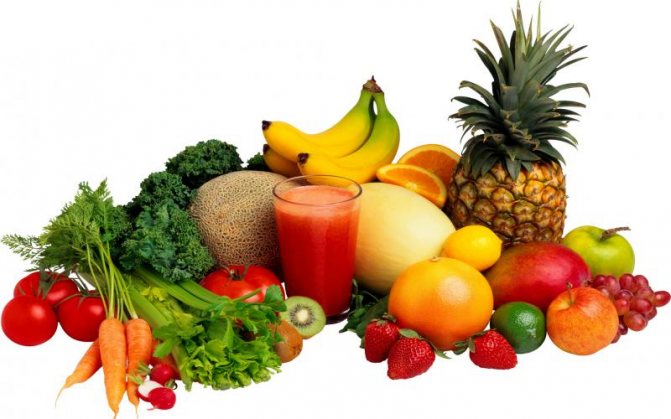
What does a diet for diverticulosis mean? basic principles that are taken into account when drawing up a patient’s diet; what products to exclude from the menu?
What is the basis of the diet for diverticulosis?
Sometimes this disease is accompanied by symptoms such as:
- constipation (sometimes accompanied by diarrhea);
- feces with blood;
- tumor formations that are determined by palpation of the abdomen;
- pain during examination;
- bloating;
- rumbling in the stomach;
- nausea or vomiting.
In general, the symptoms are like this. As we can see, it is very difficult to confuse this disease with a simple malaise. That is why, when such signs appear, it is advisable to take a closer look at your body and, if they continue for a long time, immediately consult a doctor, otherwise irreparable things may happen.
In order for the body to receive only healthy food, it is necessary not only to exclude prohibited foods, but also to prepare food correctly.
Vegetable soup
- potatoes - 2 pcs;
- carrots - 1 piece;
- onion - 1 piece;
- vegetable oil - 2 tablespoons;
- greenery.
- Cut potatoes, carrots, and onions into small cubes.
- Boil the ingredients for about 20 minutes, then add a little salt, vegetable oil, and herbs.
- After a few minutes, the dish is ready to eat.
Rules of conduct in case of diverticulosis
In the case of diverticulosis, following a healthy diet is not always enough. It is important to adhere to other behavioral norms that can prevent inflammation of diverticula.
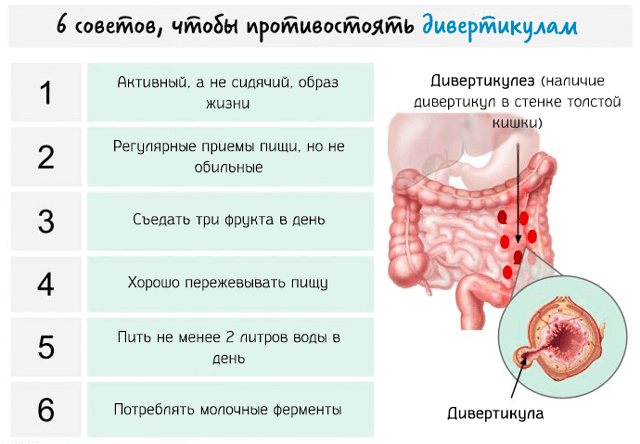
In order to avoid the occurrence of diverticulosis in patients suffering from diverticular disease, it is recommended:
- Be physically active, avoiding a sedentary lifestyle that can contribute to overweight and obesity
- Drink at least 1.5-2 liters of water per day to stimulate the formation of soft stools
- Consume 20-30 g of fiber per day to stimulate peristalsis and intestinal transit
- Carry out defecation calmly, without haste, so as not to strain the intestines and not increase the risk of inflammation of diverticula
- If you suffer from episodes of constipation, try using natural laxatives.
- Eat at least three fruits a day.
- Chew your food thoroughly and eat regularly and in small portions.
- Get into the habit of consuming sourdough products or supplements to encourage regular bowel movements
Useful tips and tricks
Keeping the body in remission requires constant effort. The main requirement for a competent approach to your health in case of diverticulitis and diverticulosis is compliance with nutritional rules. But besides this, there are other recommendations that allow you to consolidate the effect obtained, extend the time of remission and avoid complications.
- Drinking regime: drinking enough liquid allows the intestines to work properly. But the question of how much water is necessary does not have a common answer for any person. On average, this figure is 6-8 glasses per day, but this amount can decrease (with edema) or increase (with poisoning, heat).
- Facilitating the process of defecation: it is known that a common external cause of intestinal dysfunction can be not only poor nutrition, but also the habit of restraining the urge to defecate. People with diverticulosis need to have a bowel movement at the first urge.
- Combating physical inactivity: in addition to the fact that maintaining the health of the whole body, including the intestines, is impossible without physical activity, good muscle tone facilitates the process of defecation. When training, you need to pay attention to the abdominal and thigh muscles.
- If constipation occurs due to illness, you should not abuse laxatives and enemas. First of all, you need to evaluate and adjust your diet and drinking regime. If after this the problem continues to be relevant, you should consult a doctor to prescribe the safest and most gentle treatment.
In the absence of contraindications and subject to prior consultation with a doctor, traditional medicine recipes can be used. The anti-inflammatory effect is provided by infusions of chamomile and oregano, the reduction of gas formation is provided by mint decoction, and pain relief is provided by thyme seasoning. It is believed that turmeric reduces the size of diverticula. But herbal medicine can only be a complement to proper nutrition and treatment prescribed by the attending physician.
Patients often come to medical institutions with digestive problems. One of the most common intestinal diseases is diverticulosis. Most often, elderly people suffer from this disease. Small protrusions called diverticula appear in the patient’s body. They interfere with the digestion of rough food and lead to painful sensations. There is no specific treatment for diverticulosis, so patients are prescribed dietary nutrition.

